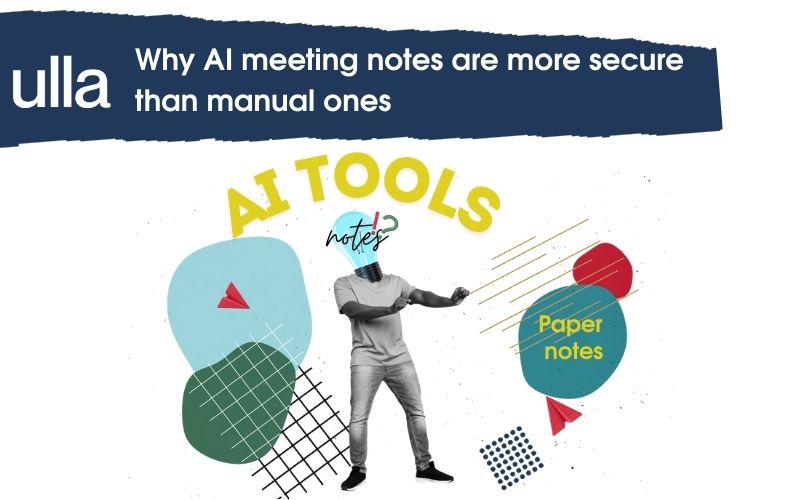Why AI meeting notes are more secure than manual ones

In a digital world where security breaches can cost millions and privacy laws are growing stricter, even the way we take meeting notes matters. AI-powered transcription and summarisation tools are quickly replacing handwritten notes and Word docs - for good reason. Here's why AI is not just faster, but safer.
1. Human Error: still the weakest link
Manual note-taking is inconsistent. A missed sentence, a misunderstood quote, or a lost notebook can mean serious consequences - especially in regulated industries. According to the 2024 IBM Cost of a Data Breach report, human error accounted for 21% of all data breaches, making it one of the top causes globally (IBM Report).
AI, by contrast, transcribes meetings in full, consistently, without depending on how fast someone types or what they choose to include.
2. Secure by design
AI note tools typically come with built-in encryption, access control, and audit trails - something traditional notes (or shared docs) rarely offer. This significantly lowers the risk of unauthorised access, leaks, or accidental exposure.
A recent letter to the editor published by the Financial Times draws attention to this very issue. In a response to an earlier article on AI tools in the workplace, a former risk and compliance officer highlights the risk of human-centric documentation and underscores the security advantages of automated systems. “It’s the manual handling of sensitive information, often with no trail, that opens the door to breaches,” he wrote. His professional perspective reminds us that structured, auditable systems are now a basic compliance necessity, not a luxury (Financial Times).
3. Better compliance, less risk
Modern AI tools are increasingly built with privacy frameworks like GDPR and HIPAA in mind. With features such as:
- Explicit user consent prompts
- Customisable retention settings
- Activity logs for traceability
…AI transcription can actually reduce an organisation’s compliance burden compared to informal, manual records that are hard to control and audit.
4. Searchable, shareable, traceable
Paper notes and half-finished shared docs don’t scale. AI notes are searchable by keyword, time, or topic, and help teams retrieve precise details weeks or months later - essential in legal, healthcare, or enterprise contexts where every word can matter.
5. AI as a governance tool
A February 2025 analysis by TechMonitor reports that more organisations are implementing AI specifically for knowledge management and compliance - not just productivity. Their research shows that in firms that adopted AI documentation systems, internal audit performance improved by 29% and legal discovery response times were reduced by up to 40%. Structured data isn’t just more efficient - it’s more defensible.
Quietly sitting in the background
You won’t always notice it, but AI tools can now sit in on calls, record discreetly (with consent), and deliver structured summaries - accurate, secure, and shareable. No forgotten tasks. No missing information.
Some platforms - even those like Ulla - offer on-premise deployment, so that conversations never leave your own systems. This is something increasingly sought after by public institutions and highly regulated sectors.
It’s not just smarter - It’s safer
AI transcription is no longer a novelty. It’s a security feature. One that’s already helping teams across industries work faster, stay compliant, and protect sensitive knowledge. And for organisations looking to centralise knowledge securely - while keeping full control - some solutions are already built with exactly that in mind.

Posted in Uncategorized on Apr 24, 2025.







